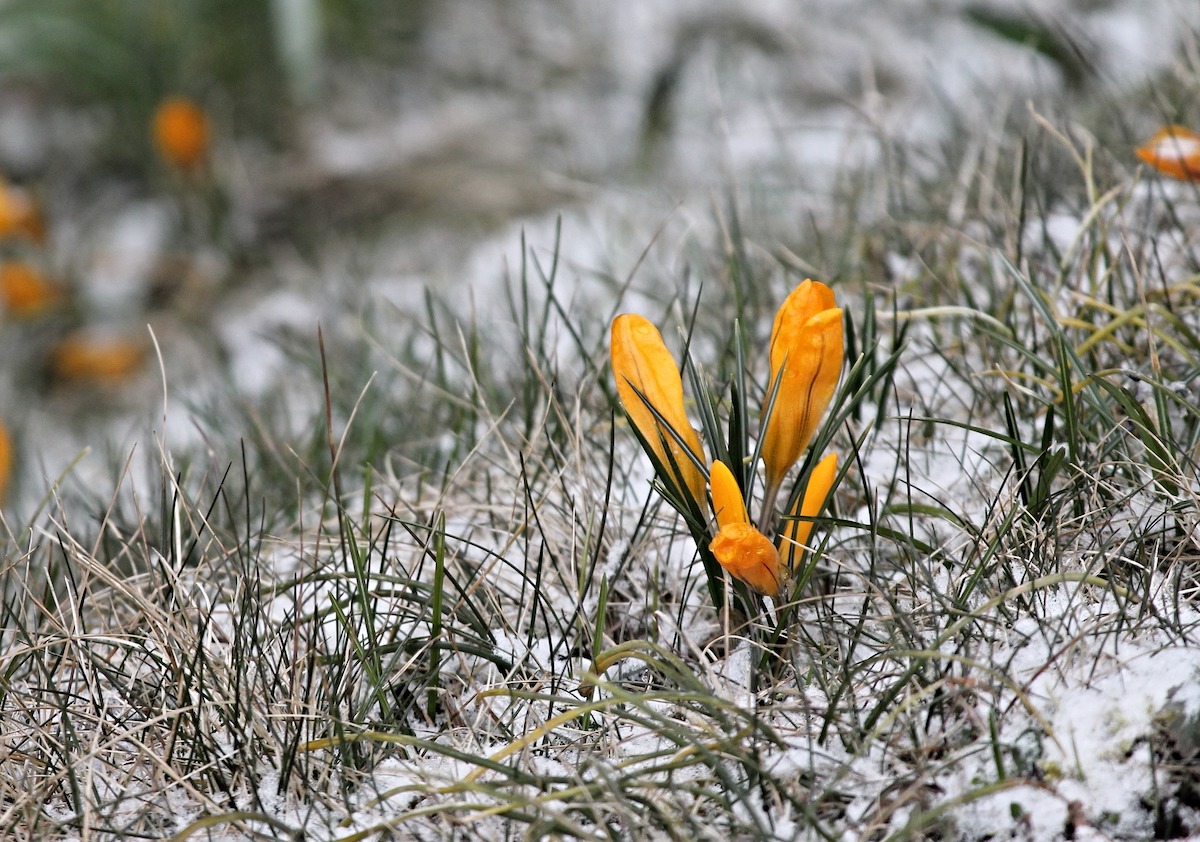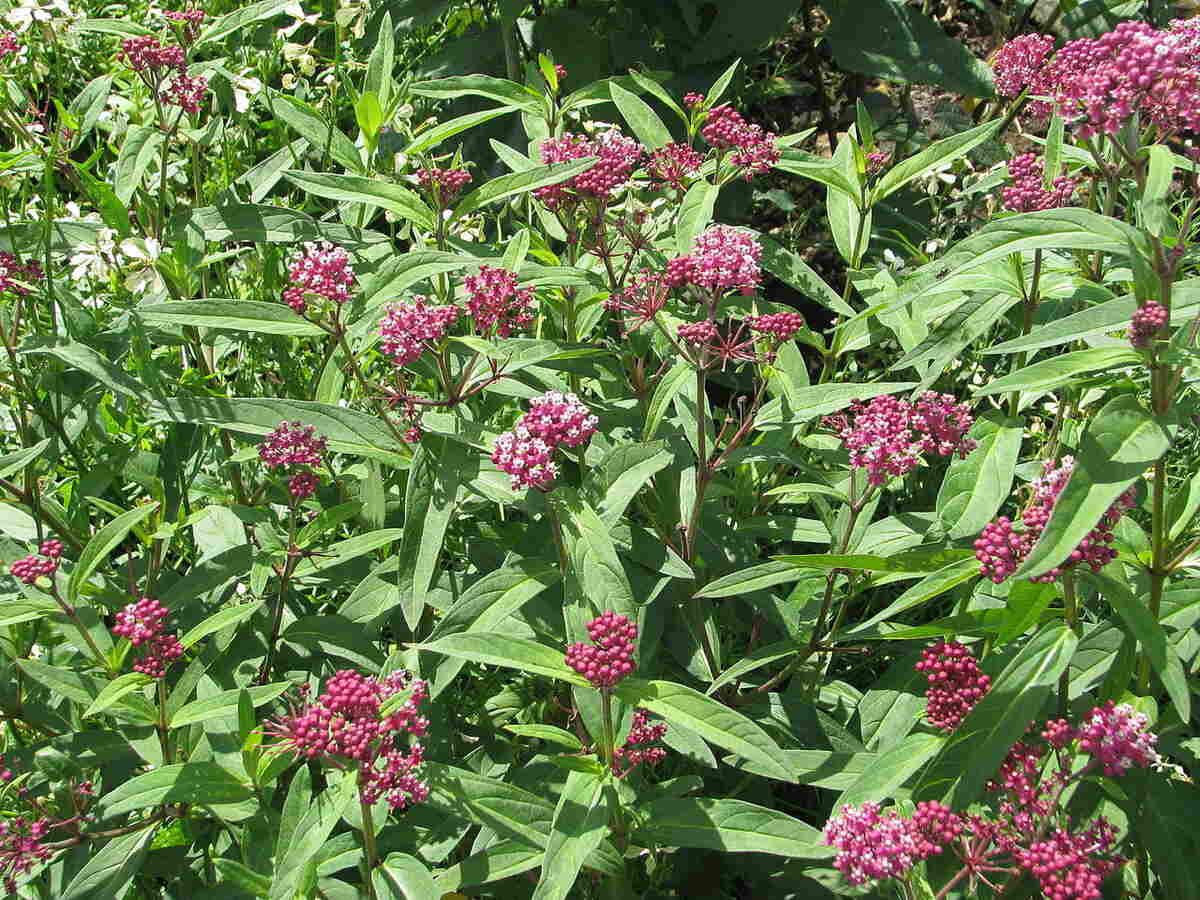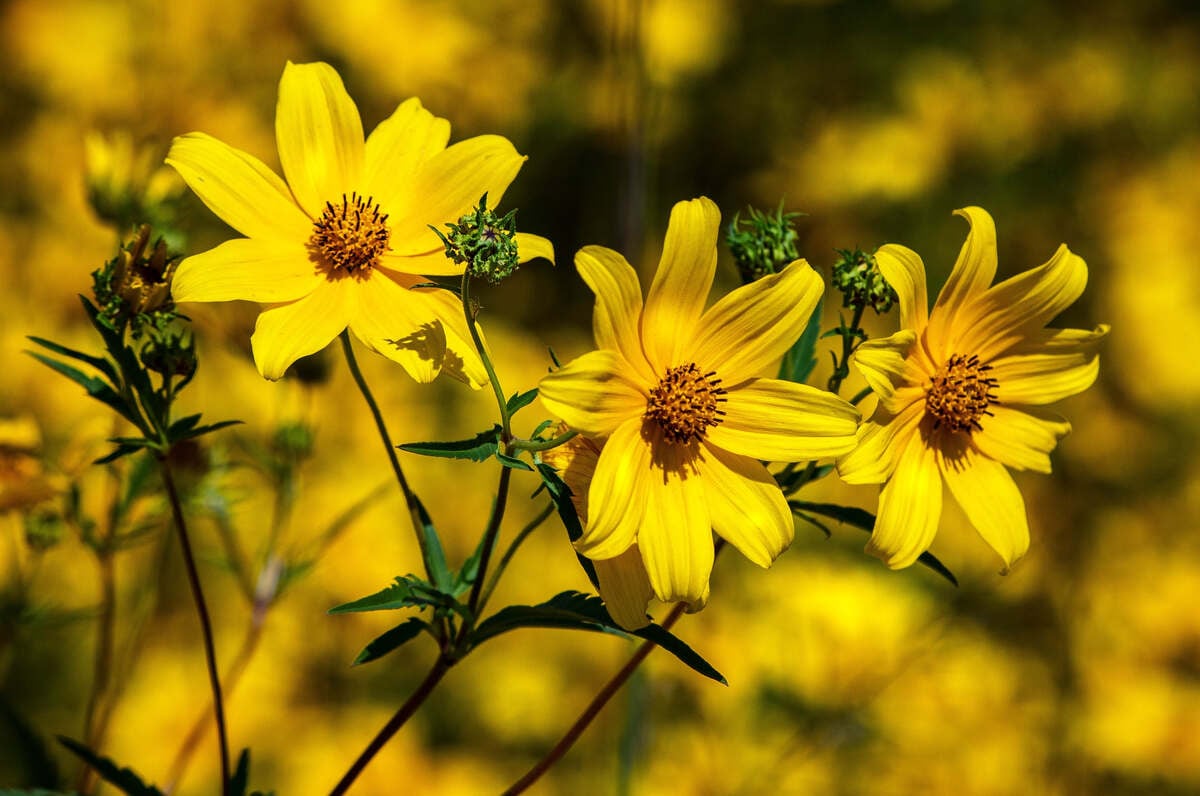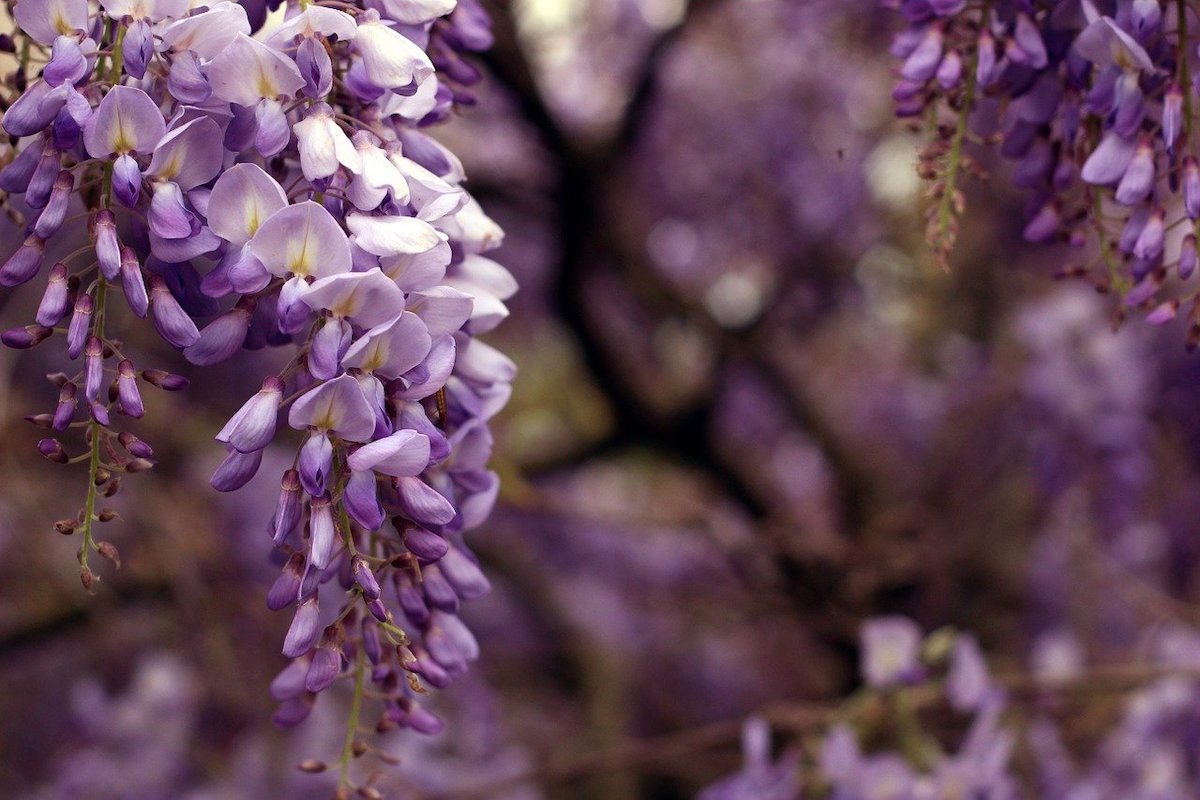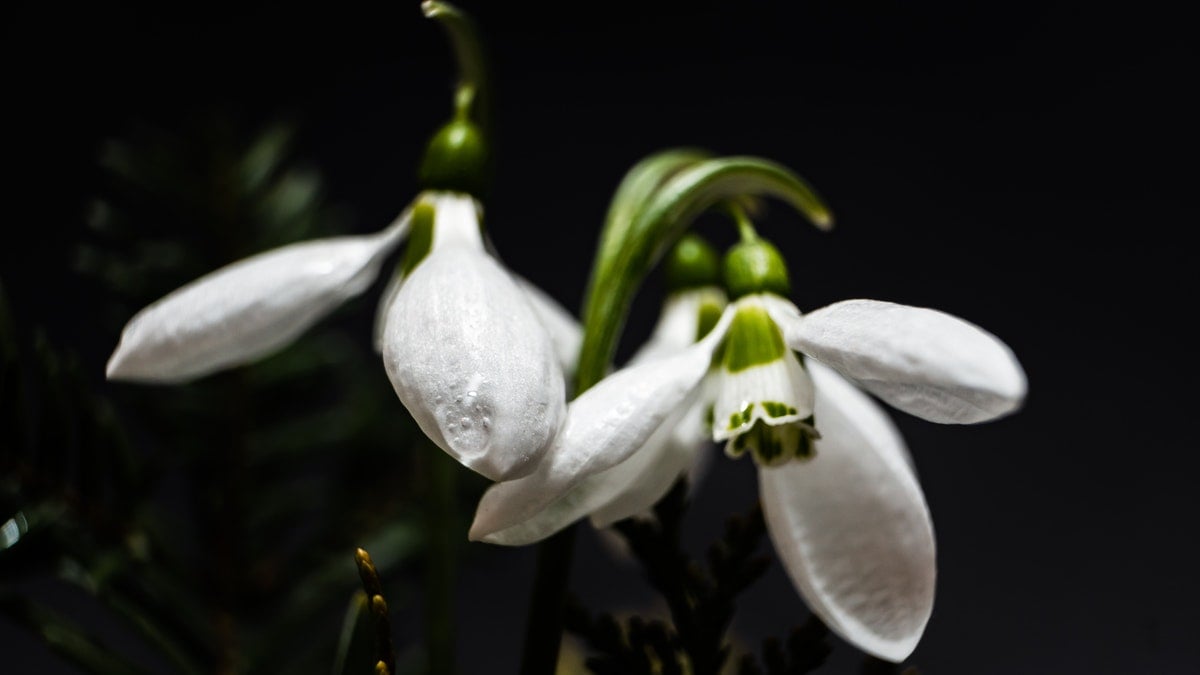
You add the last finishing touches to your colorful butterfly garden, only to realize your job’s exhausting hours and hectic day schedule will keep you from ever appreciating your new flower bed. Well, that’s not the case with a moon garden.
Beautiful perfumes, extraordinary nighttime blooms, and stunning moonlit reflections — your moon garden will welcome you home every evening as your other garden flowers close their petals for the night.
So, while you may finally have a butterfly garden to enjoy on the weekends, let’s gather up our angel’s trumpets, white hydrangea, and jasmine to build a moon garden you can enjoy any night of the week.
What is a Moon Garden?
A moon garden features plants accentuated by the moonlight. Many of the best moon garden plants only bloom or emit fragrance at night. Other moon garden plants have silvery foliage or white-colored blooms that emit a radiant glow in the moonlit night.
Keep in mind that not every plant is well-suited for a moon garden. Common moon garden plants include angel’s trumpet, evening primrose, snowdrop, and foxglove.
How to Create a Moon Garden
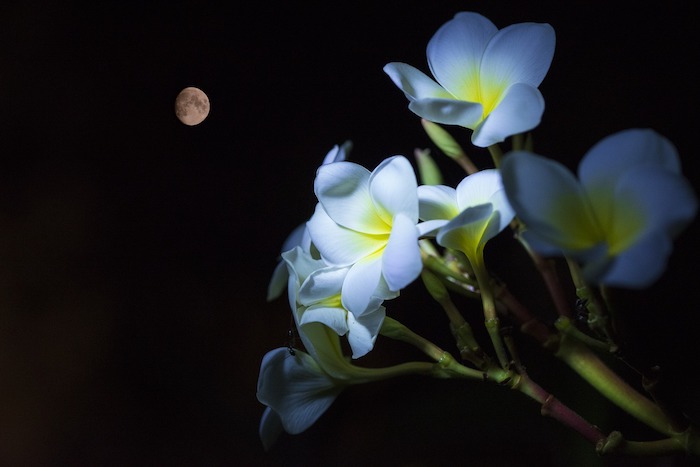
Like building any other garden, you’ll need ample space, gardening tools, and perhaps some nice edging and mulch for your moon garden.
But what makes your moon garden different from a regular garden is the plants you grow, the atmosphere you create, and where it’s located. Your moon garden should glow in the glistening moonlight without interference from tall trees or your home, and be a calming, zen space for evening relaxation.
Pro Tip: Keep in mind that for many of the suggested plants listed below, there may be overlap between blooming time, white flowers, nighttime fragrance, and shiny foliage. For instance, you may wish to choose a plant that is both fragrant and white, or only fragrant and not white — either is fine.
Choose the location of your moon garden
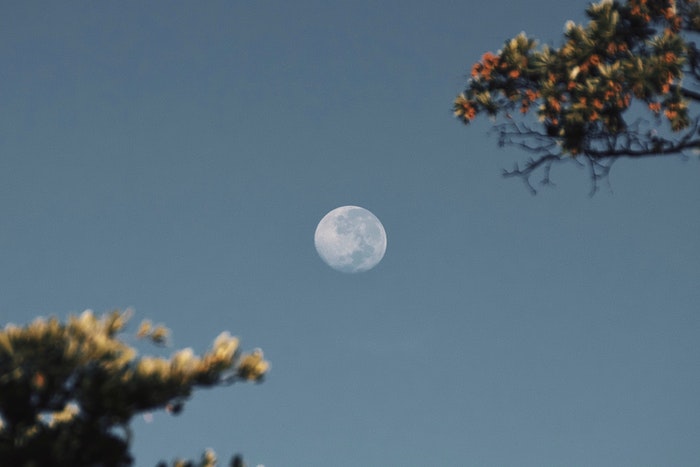
Before picking up your trowel and shovel, it’s important to find the right spot for your moon garden — it won’t look great just anywhere.
First, consider where you can best enjoy your moon garden. Is it from the front porch, back deck, or in your outdoor living space? Ask where you will have both a great view of your moon garden and also be able to smell its beautiful fragrances.
Next, take note of when and how much moonlight reaches parts of your yard. If the moon doesn’t cast its light near your deck, or it only does so way after your bedtime, perhaps the deck is not the best area to establish your moon garden. But if the front porch receives ample moonlight in the early evening hours, then the porch may be just the spot that gives you the best viewing at the time of day you’re most available.
You’ll also want to grow your moon garden in a space that gives you easy access to the garden at night.
Select plants for your moon garden
After a long workday and a sink full of dishes to clean, you don’t want your garden tucking in for the night just as you’re finally ready to relax.
White-flowering plants
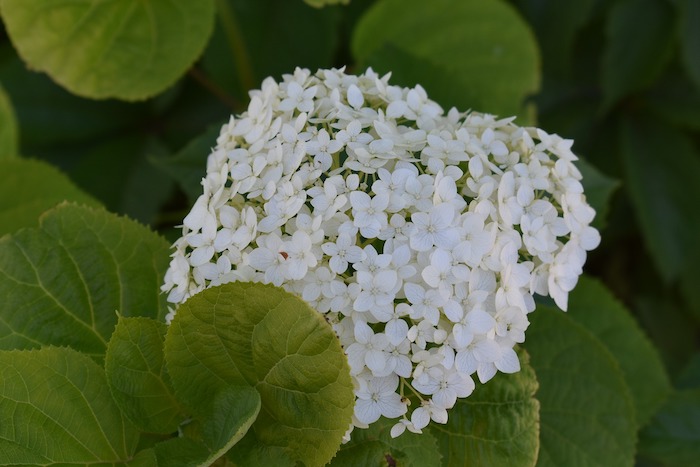
Planting white or pale flowers is essential for any moon garden. Once your eyes adjust to the night, you’ll see how these pale blooms stand out in the darkness and create different hues in the moonlight than in the daytime. White plants perfect for a moon garden include:
- Snowdrops
- Bleeding hearts
- Hydrangea
- Daffodil
- Snow-in-summer
Night bloomers
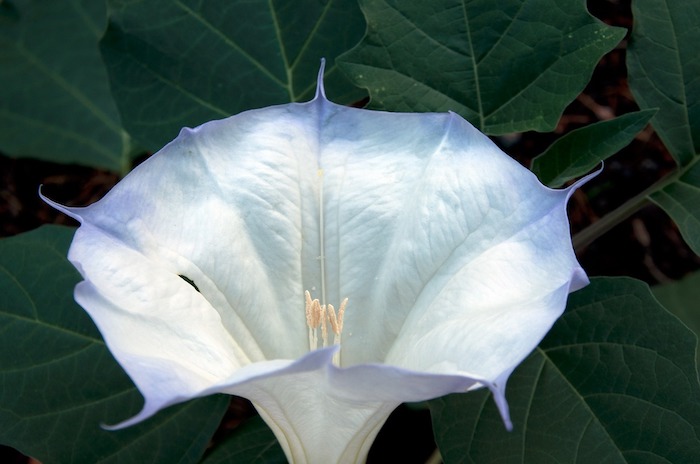
What makes a moon garden so magical is the night-blooming plants. Just as you’re ready for an evening walk in the garden, their petals will open to the striking moonlight and light up like stars in your landscape.
Excellent night bloomers to add to your moon garden include:
- Four o’clocks
- Moonflower
- Evening primrose
- Angel’s trumpet
- Night-blooming jasmine
Fragrant plants
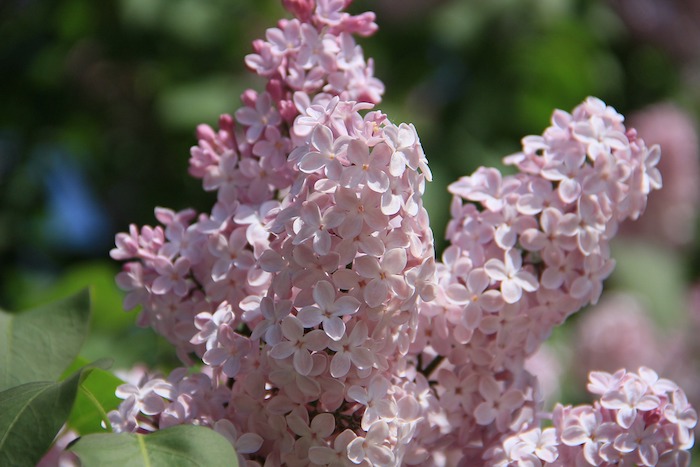
Many moon garden plants withhold their delicious fragrance in the daytime, but let their perfumes fill the night air under the moon. For a moon garden that makes you swoon and take delight in the fragrant night air, you’ll want to include these aromatic plants in your moon garden.
As your sense of sight fades with the sun, your other senses will grow stronger in your moonlit garden. This means aromatic flowers during the day will be even stronger through the night. The nighttime fragrances will smell beautiful to your nose, more potent and refreshing than smelling flowers in the daytime.
Fragrant plants for your moon garden include:
- Peonies
- Bearded Iris
- Roses
- Lilac
- Mock orange
Plants with bright foliage
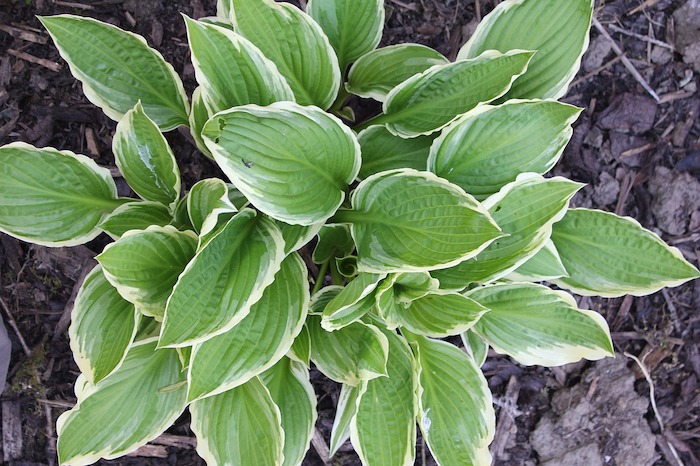
Blooming flowers that pop under the moonlight are perfect for a moon garden. But what about leaves?
Plants with silver, variegated, or gray foliage can make excellent additions to your moon garden and add stunning texture with their reflective, shining leaves.
Consider these foliage plants for your moon garden:
- Variegated hosta
- Lamb’s ear
- “Silver Mound” Artemisia
- Moonglow Juniper
Add some soothing sounds
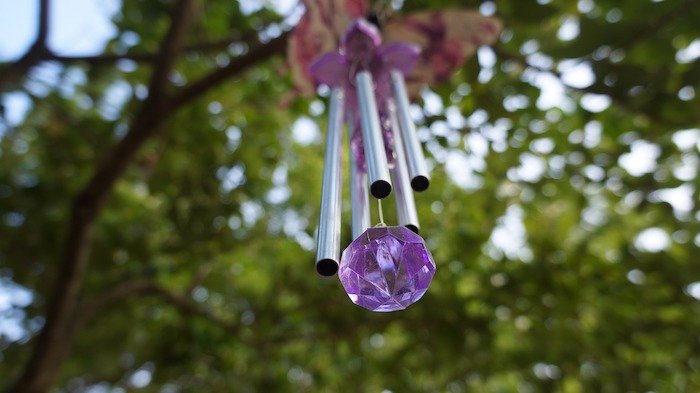
Your moonlit garden should do more than just excite your nose and eyes. What do you want to hear as you unwind in your calming moon garden? Charming melodies, rustling grass?
Wind chimes can add the perfect dose of musical serenity to your moon garden. And ornamental grasses swaying in the wind will ease your mind after a long workday.
Relax near a water feature
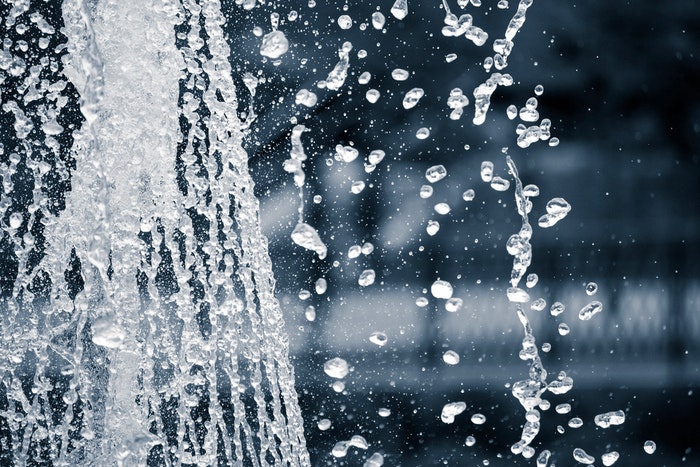
For a romantic moon garden that could have you writing a poem on every evening stroll, consider adding water features to your moon garden design.
A small pond resting near your moon garden will have you marveling by the moonlight shining on the water’s rippling surface.
Or perhaps you’d prefer the splashing, glittering specks of silver light only a garden fountain could make.
Water features can add both mesmerizing sound and elegance to your moonlit oasis.
Walking paths keep you safe
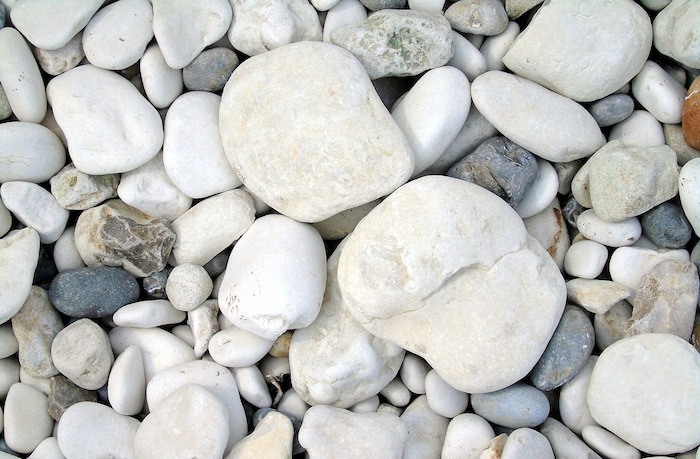
A walking path in your moon garden is a smart way to guide you and your guests through the beauty of the night.
Especially when it’s dark, and the sun has gone down, you may appreciate the sense of security and direction a garden path can provide. White paver stones or white pebbles can be excellent materials for a path that reflects the shining moonlight, giving your tranquil garden an extra glow.
Artificial light can add to the beauty
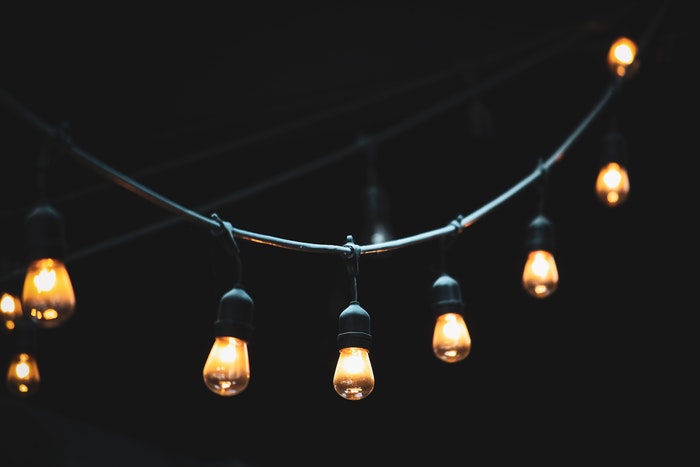
Adding artificial light to your moon garden can be tricky because you don’t want to overdo it. Too much artificial light can wash out the natural moonlight and take away the beautiful effects of a garden glowing in the dark.
But a bit of artificial light in your moon garden may do some good. For a magical touch beneath the full moon, hang small string lights between tree branches or a nearby tall structure. This will create a cozy outdoor space that will feel like the stars from the night sky are right in your garden.
For security and safety, consider installing small lanterns along your moon garden’s walking paths.
FAQ About Moon Gardens
As we’ve described above, a moon garden is a garden that thrives in and is accentuated by moonlight. Gardening by the moon means planting or harvesting your garden according to the moon’s changing signs or phases.
You certainly can build your moon garden by the moon as the phases change throughout the lunar month, but it’s not a necessary step to growing your moon garden.
Since ancient times, civilizations have looked to the moon, sun, stars, and planets for astronomical signs of guidance. Today, many gardeners look to the moon to determine the best time to plant and harvest their gardens.
Yet the jury is still on whether the moon or planting by the moon’s phases affects plant growth. Many gardeners will swear this age-old gardening tradition has made their garden the success it is, while others may argue it’s merely folklore.
If you do wish to plant by the moon and test this theory for yourself, The Old Farmer’s Almanac offers helpful guidelines:
— For annuals and fruits and vegetables that bear crops above ground (like tomatoes and corn), plant during the waxing of the moon. Waxing occurs from the day the moon is a new moon to the day it’s a full moon.
— Plant flowering bulbs, biennial and perennial flowers, and vegetables that bear crops below ground (like carrots and potatoes) during the waning of the moon. Waning occurs from the day after the full moon to the day before it’s new again.
That depends. If you plant annuals, expect to replace them the following growing season. On the other hand, perennials will return the next growing season, though the number of returning years will vary depending on the perennials you plant.
If your pup likes to chew on anything in sight and enjoys romping around the flower bed, you may want to build your moon garden with them in mind. Many plants are poisonous to dogs and are best left out of the moon garden. Toxic plants for your dog include, but are not limited to, hydrangea, lily of the valley, peonies, and primrose. Pet Central by Chewy offers a complete guide on plants poisonous to dogs.
Benefits of a Moon Garden
A moon garden makes a beautiful addition to the landscape, and it can finally be a garden you’re able to appreciate and admire, given your hectic work schedule.
No more having to wait till the weekends to appreciate your gardens, and no more having to miss those precious sunlit hours just before the day’s end.
With a moon garden, you can appreciate your garden every night of the week and get the calming garden meditations you need before a new day.
Moon gardens are also beneficial to nighttime pollinators, such as moths, bats, and bees. Take a nighttime stroll through your moon garden, and enjoy the sounds of buzzing vibrations and the sites of marvelously patterned moth wings reflecting the light of the moon.
When to Call a Landscaping Pro
Call a professional landscaper near you if you need assistance with your landscape design, which flowers to choose for your moon garden, or water feature installations. A professional landscaper can also install your moon garden if you don’t have a green thumb.
Main image credit: Vlad Chețan / Pexels

